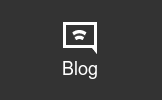Posted by Jennifer Rapp Peterson
 Your website content is all about you and your products. But it’s important to remove yourself from the equation and consider your audience when you are writing, photographing, tagging and describing everything on your site.
Your website content is all about you and your products. But it’s important to remove yourself from the equation and consider your audience when you are writing, photographing, tagging and describing everything on your site.
Start by asking some of the same questions I posed in my last post, Brand You: Uncover Your Brand, Discover Your Audience.
Define your target market.
- Who buys your work now? Or who reads your blog? If you have not built an audience yet, consider why someone would want to buy or connect with you.
- Where do they live? Are they men or women? How old are they? (Not only are demographics great to capture, but aberrations from your primary demographic are great to note too – like do Grandmothers buy your handmade sweaters for grandchildren?)
- Why do they buy from you? (as opposed to other sellers?) Why do they want it? (Quality at a lower price? Technique or style? Does your content make them laugh?)
- What particular things do they buy from you? What are you best sellers? (Your signature products.)
- Where do they buy your stuff now? Craft Fairs? Website? Trunk Shows? (List where you are sold and what shows you attend.)
- How do they want it? How do you package your products? How do you “package” your posts? Do they expect to see your posts sprinkled with awesome photos?
- What do they expect from you? (Be sure to describe how you package and entitle your photography.)
Write from your target audience's perspective.
How might they search for your kind of content or products?Think about phrasing your content based on how people search or how THEY would describe your work.
Using this method also makes it easier for search engines to find you.
Personally, I am a minimalist when it comes to design and descriptions. Less is more. But for search engines, you have to have the right content, otherwise you have little chance of getting found.
You may consider asking customers to describe your work:
- What do they see in your work?
- How would they describe your style? For instance, you might never describe your work as being “cute,” but everyone else does.
- Do you have a similar look to someone else’s? Are you often compared to another artist? Is your work part of a movement?
Objectify your writing. Consider writing in the third person.
The “About” page on a website can be one of the most difficult of pages to write. Try these tactics:
-
How would a journalist write about you? If you have gotten press in the past, quote some of them. Or start with that perspective.
-
Is your name known? If so, by writing in the third person allows you to use your name throughout your website. For instance, your website address may be www.janemarion.com, but folks might look for your paintings by typing, “Jane Marion paintings,” if those words aren’t there, how would they find you?
Try something like this: Paintings by Jane Marion are sold in fine galleries throughout the United States. Please check out our “Where to Buy” page.
Or "Jane Marion received “Best in Show” for her artwork, “Sandwich,” this past summer at the 2011 Art in the Garden Festival in Cincinnati
Write product descriptions that address the needs of your target market(s).
This is tedious but ever so important. Excluding details excludes customers. It can can act deterrent from purchasing or understanding what you do. Consider:
- What do you sell EXACTLY? Be sure to include the nitty gritty details like dimensions and materials. (Sometimes people use dimensions to search for products.)
- What problem does it solve or what uses does it have? Like, “makes a great centerpiece,” “hang it in your bathroom,” or “fun Christmas gift idea.”
Assume nothing of your audience. It’s your job to educate the search engines and newbies.
Write as if your audience is new to your website and knows nothing about you and your work. Often we assume our audience knows all about us already. But search engines don’t know you. The only way they get to know you is by writing informative content.
For many artists, it is difficult to describe their own work or toot their own horns. It can be extremely boring to measure everything or try to remember your process doing something.
The better you are at describing what you do and what you are the more customers will connect and buy from you.




